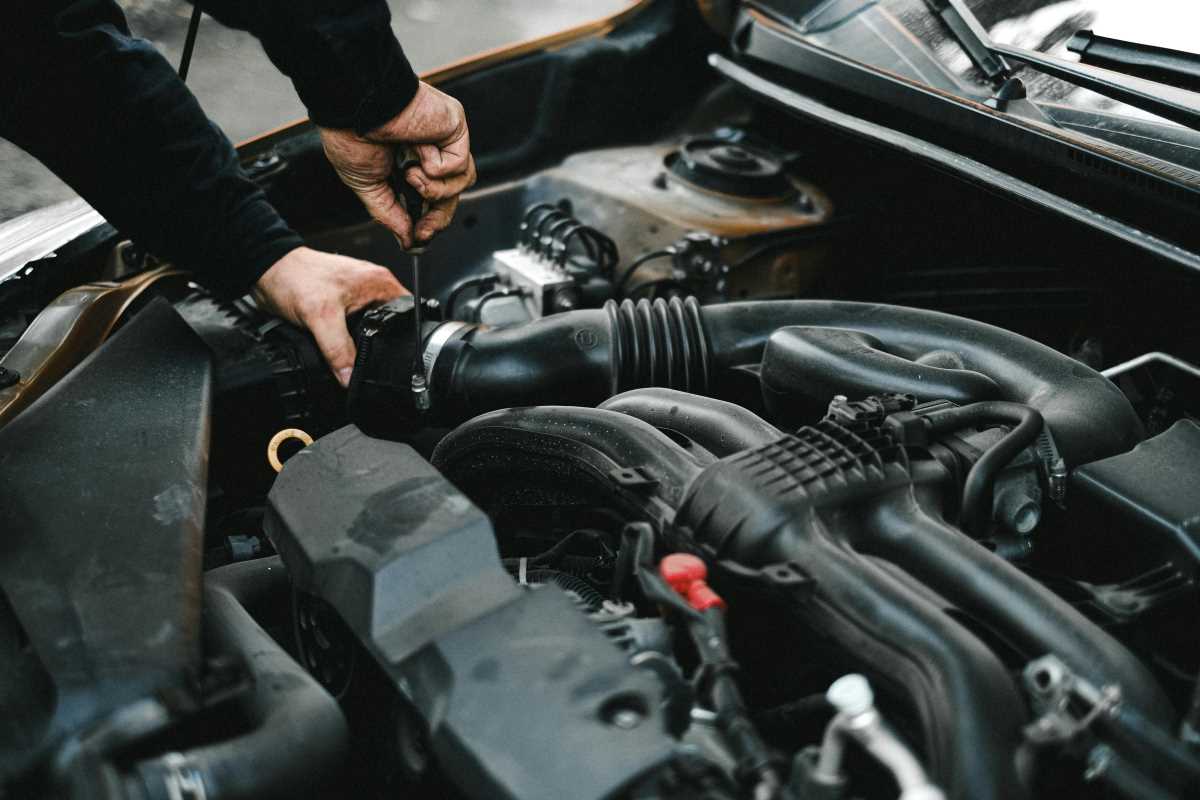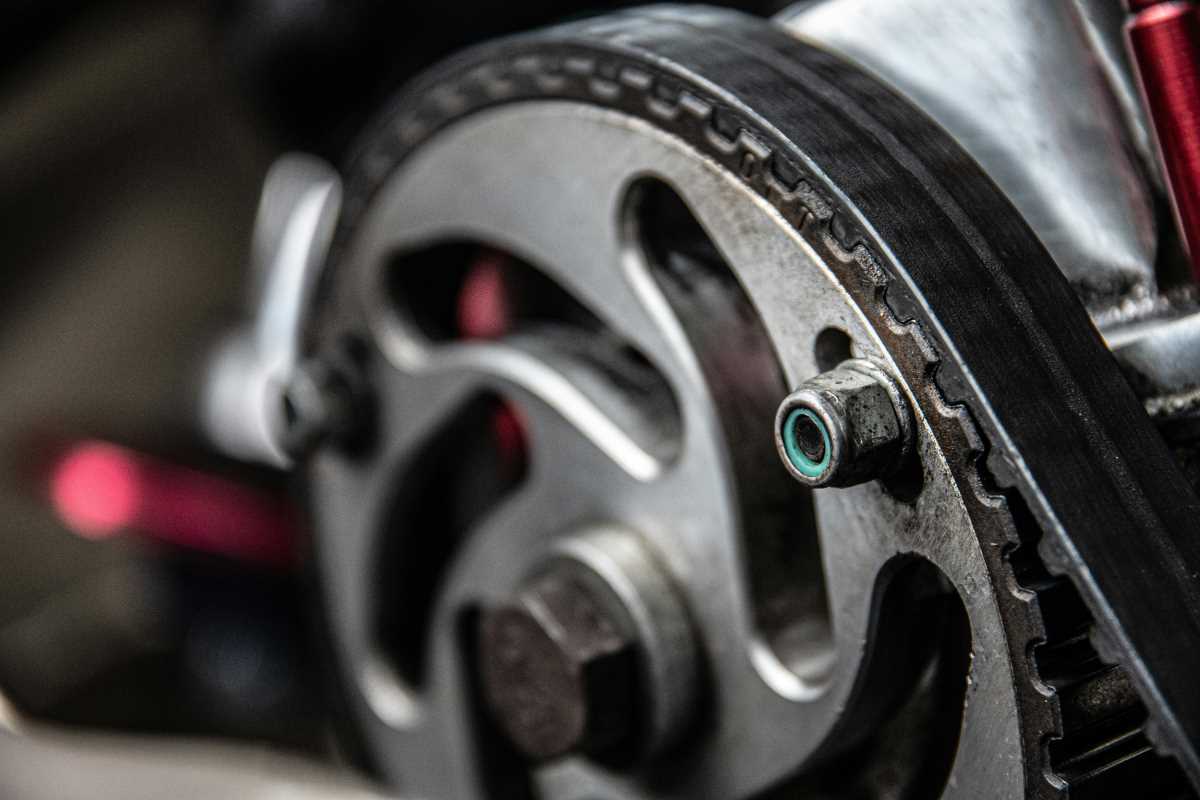A car that resists your commands or pulls in unpredictable directions can quickly turn a simple drive into a nerve-wracking ordeal. Steering problems are a serious safety risk that can escalate into dangerous situations if left unaddressed. Whether you’re struggling with stiff turns, unusual noises, or a car that seems to wander out of alignment, identifying the cause early on can save you from costly repairs and ensure your safety on the road. This guide dives into the most common culprits behind steering issues, how to spot the warning signs, and what steps to take to keep your car driving smoothly and reliably.
Is Your Power Steering Fluid Low?
Low power steering fluid is one of the most frequent causes of steering issues.
- Why it happens:
- Power steering systems rely on hydraulic fluid to create the pressure necessary for smooth and easy steering. Low fluid levels, often caused by leaks, reduce this pressure.
- Symptoms:
- Steering feels stiff or harder to turn than usual.
- Groaning or whining noises when turning the wheel.
- Visible fluid leaks under the car, typically red, pink, or clear in color.
- How to check:
- Open the hood and locate the power steering reservoir (usually marked on the cap). Check the fluid level against the minimum and maximum markers. If it’s low, your system may have a leak.
- What to do:
- Top off the fluid with the type specified in your car’s owner’s manual. If the fluid continues to drop, have a mechanic inspect the system for leaks.
Reminder: Ignoring low power steering fluid can damage the power steering pump, leading to costlier repairs.
Are Your Tires Improperly Aligned?
Improper tire alignment can make steering more difficult and lead to uneven tire wear.
- Why it happens:
- Hitting potholes, curbs, or driving over rough roads can throw your wheels out of alignment. Over time, normal wear and tear can also affect alignment.
- Symptoms:
- The car pulls to one side while driving straight.
- Uneven or excessive tire wear.
- The steering wheel isn’t centered when the car is moving straight.
- How to check:
- Inspect your tires for uneven tread wear. A professional alignment check at an auto shop will confirm if adjustments are needed.
- What to do:
- Schedule a wheel alignment to restore proper steering and tire life. Regular alignment checks (at least once a year) can prevent this issue.
Pro Tip: Proper alignment improves not only steering but also fuel efficiency and overall driving comfort.
Do You Have Worn-Out Steering Components?
Worn steering components, such as tie rods, ball joints, or bushings, can affect steering precision and safety.
- Why it happens: Constant movement and stress weaken these components over time, leading to slack in the steering system.
- Symptoms:
- A loose or “playful” feeling in the steering wheel.
- Clunking or knocking noises when turning or driving over bumps.
- Vibration in the steering wheel, particularly at higher speeds.
- How to check: Have a mechanic inspect the steering system for worn tie rods, ball joints, or bushings. Visual inspection and a suspension check can identify weak components.
- What to do: Replace any worn or damaged parts immediately. Driving with faulty steering components increases the risk of losing control.
Reminder: Address steering component issues as part of your regular maintenance to avoid sudden failures on the road.
Is Your Steering Rack Failing?
The steering rack (or rack and pinion) is central to your car’s steering mechanism. When this component starts to fail, it can result in poor steering performance.
- Why it happens: The steering rack’s internal components wear out over time, especially in high-mileage cars. Leaking power steering fluid or damaged seals can also accelerate failure.
- Symptoms:
- Difficulty turning the steering wheel, especially at low speeds.
- A burning smell coming from under the hood.
- Fluid leaks or low power steering fluid levels.
- How to check: Have a professional inspect the steering rack for leaks or worn components. Testing the rack’s performance is a specialized process requiring a mechanic.
- What to do: If the steering rack is failing, replace it immediately to restore proper steering function. Replacing the rack can be labor-intensive but crucial for safety.
Pro Tip: Properly maintaining your power steering system helps extend the life of the steering rack.
Do You Have Binding or Sticking in the Steering Column?
Problems with the steering column can make steering feel stiff or unresponsive.
- Why it happens: Faulty internal components, worn bearings, or debris buildup within the column can cause sticking or binding.
- Symptoms:
- Resistance or stiffness when turning the steering wheel.
- Steering wheel doesn’t return to the center position after a turn.
- Clunking or grinding noises from the steering column.
- How to check: Have a mechanic inspect the steering column’s internal mechanisms for damage or wear. Lubrication and alignment checks may also be needed.
- What to do: Repair or replace any damaged components in the steering column. Regular inspections can prevent serious issues from developing.
Reminder: Ignoring steering column issues can cause more strain on other parts of the steering system.
Are Your Steering Belts or Hoses Damaged?
Damaged steering belts and hoses can interfere with the hydraulic operation of power steering systems.
- Why it happens:
- Belts can crack or wear out, while hoses may develop leaks due to high pressure or old age.
- Symptoms:
- Squealing noises when turning the wheel.
- Reduced power steering assist.
- Visible cracks, frays, or leaks in belts and hoses.
- How to check:
- Inspect belts and hoses for signs of wear or damage. Look for leaks around the power steering pump or connections.
- What to do:
- Replace damaged belts and hoses as soon as possible. Neglecting these components can lead to sudden steering failure.
Pro Tip: Regularly inspect and replace worn belts and hoses as part of your routine maintenance schedule.
Is Your Wheel Bearing Failing?
Damaged or worn wheel bearings can cause steering difficulties and unusual noises.
- Why it happens: Wheel bearings wear out over time due to heat, friction, and stress from normal driving conditions.
- Symptoms:
- Grinding, humming, or growling noises that change with speed.
- Steering feels loose or shaky.
- Uneven tire wear.
- How to check: Have a professional check your wheel bearings. A mechanic will lift the car and assess wheel play or listen for unusual noises.
- What to do: Replace faulty wheel bearings promptly. Neglected bearings can cause the wheel to detach, creating a significant safety hazard.
Reminder: Regular inspection of wheel bearings during brake service can help catch wear early.
When Should You Seek Professional Help?
Some steering problems may be hard to diagnose without professional tools and expertise. Call a mechanic if:
- Steering difficulties worsen noticeably over time.
- You’re hearing unusual noises from the steering system.
- Quick fixes, like adding fluid, don’t resolve the problem.
- Your car pulls or drifts sharply, even on smooth roads.
Safety Warning: A compromised steering system can be a major hazard. Don’t delay repairs when steering feels off or unresponsive.
 (Image via
(Image via





